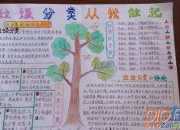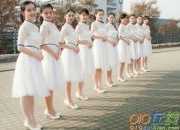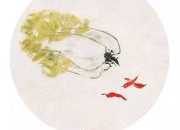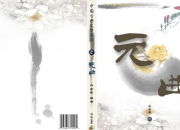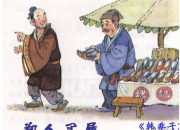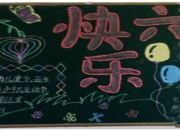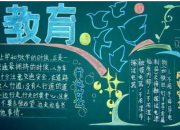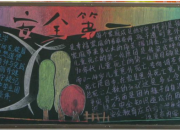高中全英说课稿
时间:2021-08-31说课是20世纪80年代后期随着教改深入而产生的带有教育科研性质的`教研活动,下面是小编整理的相关内容,希望对你有帮助。
高中全英说课稿一
Good morning, ladies and gentleman. Today, I feel honored to have the chance to share my ideas about how to teach reading.
In the reading process, I will focus on students’ long-term development and enable them to use proper reading skills and strategies. In other words, students are guided to read efficiently and independently.
My teaching plan will include 3 sections. They’re analysis of the reading material, identifying the teaching aims and teaching procedures.
Section 1 Analysis of the teaching material
The selected teaching material is a magazine article taken from the Project section of Module 11, Unit 2 of Advance with English. The article is about British students who take a gap year, which is intended to develop the theme of the unit, that is, Getting a job. After analyzing it carefully, I find the article has two unique characteristics. First, it’s a long passage with 688 words, much more than the usual texts. Second, it deals with a new topic, that is, a gap year. The topic is unfamiliar to most students.
Section 2 Indentifying the teaching aims
Based on the analysis of the teaching material, I have chosen the following as the teaching aims of my lesson:
The 1st aim: Students learn the skills and strategies to read a prolonged text.
The 2nd aim: Students get a better understanding of what a gap year is.
The 3rd aim: Students are encouraged to figure out the implied meaning.
The 4th aim: Students are familiar with various expression_r_r_r_r_rs or approaches to express the same thing or idea.
Section 3 Teaching procedures
In order to achieve the teaching aims mentioned above, I decide to choose guided reading and Task-Based Teaching as the main teaching approach. With the teaching methods, I can guide students to use effective reading strategies to comprehend the text, solve problems and complete different tasks. The teaching procedures include four parts. They’re getting ready, focusing on main facts, reading between the lines and responding the text.
Part 1. Getting ready
Reading begins before a book is opened. It’s important to activate students’ existing background knowledge and draw their attention to the topic of the text. In this part, I will use the pre-reading activities to increase students’ concentration, arouse their curiosities, fire their imagination and give them a purpose for reading. The part consists of two tasks:
Task 1: A time machine. I start my lesson by asking senior 3 students what the date is. Then, I go on to show a picture of a time machine. I tell students that the machine with a magic power will bring them to their graduation from high school, which is 1 year away. At that point, I get them to imagine where they are and what they are doing.
After it, I give a summary of their presentations as follows: After leaving high school, most of Chinese students go straight to university.Yes, at this time next year, most of you will be studying in a university.
(With the task, I inspire students’ former knowledge and imagination about graduating from high school and going to college, which can draw their attention to the theme of the reading material and get them ready for the following reading.)
Task 2: Brainstorming. After the summary, I go on to show some more pictures of British students fresh from high schools, and tell students that more and more students in the UK are doing something different instead of going straight to university. After that, I play the tape of Para.1 and get students to catch the answer to the question: They will travel or work on projects for up to a year before entering university.
(With the task, I excite students’ desire to know more about what their British equivalents will do before going to college. With the question in mind, students will definitely be eager to listen to the tape to find the answer. )
Part 2. Focusing on main facts
During the part, I will ask the students to answer the question—What does the author say? Students are supposed to get a main idea of the text and understand the basic meaning of the text. Questions of this kind are not very difficult and they can be answered directly from the text. The part includes six tasks:
Task 1: Three examples. I move on to tell students as follows: Last year, Carol Smith, Daniel and Martin Johnson, 3 students from the UK, went to some remote places and did something special. After the instructions, I play the tape of Paragraphs 4-6 and get students to complete the following table.
(With the task, I get students to listen to the three paragraphs instead of reading them, thus reducing the amount of reading time and reliving their psychological burden, otherwise students would be discouraged by such a long article.)
Task 2: Matching. After listening, I get students to open books and scan the three paragraphs to check the answers to the previous table. Then they’re required to complete another table with a second reading.
(With the task, students learn to use a table to gather the main facts about the three British students. They’ll come to know that a table is of great help in their future reading.)
Task 3: Scanning for a detail. I get students to scan the rest paragraphs and find the answer to the question: What do people call the year off between finishing school and starting university? In doing so, I introduce the theme of the article and write on the blackboard the title: Mind the gap year.
(With the task, students are expected to grasp the theme of the article. The task serves as a bridge,which connects the main facts in Paragraphs 4-6 to the opinions about the gap year in the rest paragraphs.)
Task 4: Definition of the gap year. Students watch a VCR with a question in mind: What three types of activities do the UK students choose to do during a gap year? The key is: Many students use that time to travel, learn new skills or become a charity volunteer.
Task 5: History of the gap year. I play a second VCR and get students to answer the question: When did the gap year start in the UK? (The task serves as a supplementary to the second task of Part 1. With the task, students are expected to know more about the gap year.)
(The task enables students to have a good knowledge of the history of the gap year.)
高中全英说课稿二
Interpretation
Good morning, ladies and gentlemen. It’s my great honor and pleasure to be here sharing my lesson with you.
I have been ready to begin this representation with five parts. Analysis of the teaching material, the teaching aims, the important and difficult points, the studying methods, and the teaching procedure.
